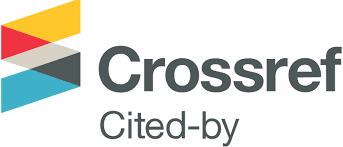Extended Abstract: Consumers are becoming more aware of the environmental and social implications of their consumption choices, and researchers are increasing efforts to profile the factors that influence sustainable consumption attitudes and behaviors. Previous research on sustainable consumption has primarily focused on identifying enduring factors such as sociodemographic, cultural, psychographic traits, and value orientations (Essiz, Yurteri, Mandrik, & Senyuz, 2023). However, individuals' consumption decisions may be influenced not only by enduring factors but also by situational factors and environmental cues. In this regard, less is known about the roles of marketing stimuli and non-conscious processes and how they may promote or inhibit sustainable consumption choices for consumers (Pinto, Herter, Rossi, Borges, & A, 2014).
Investigation of situational factors in consumer psychology frequently has employed priming theory as an explanatory framework. Priming describes how a given non-conscious stimulus affects subsequent psychological states and behaviors, such as decision-making (Minton, Cornwell, & Kahle, 2017) . Within this scope, the brand priming phenomenon deals with how mere exposure to different brand characteristics can elicit attitudinal and behavioral changes. Although the effects of brand priming on various consumer behaviors (e.g., information processing, individual performance, and brand resistance) have been studied (Brasel & Gips, 2011; Laran, Dalton, & Andrade, 2011; Maher & Hu, 2003), scholarly research into the effects of brand priming on sustainability-relevant consumer behavior is lacking. To bridge this gap, the present research builds on the perspective of brand priming theory and attempts to demonstrate the effect of brand priming on sustainable consumption attitudes and behaviors by examining the indirect effects of altruism and materialism. This research is based on two experimental studies in which we employ two focal priming conditions (sustainable brand vs. luxury brand stimuli) to understand the differential impacts of brand primes.
In both studies, participants were exposed to one of the above-mentioned brand priming concepts, followed by a series of questions assessing their values, attitudes, and behaviors. After obtaining ethics board approval for this research, we recruited a convenience sample of 320 college students (NStudy1 = 160; NStudy2 = 160) studying at a large state university in North Cyprus. We adapted pre-validated multi-item metrics to capture our key constructs: materialistic and altruistic value orientations as well as sustainable consumption attitudes and behaviors. In the first experiment, participants were primed with a luxury brand concept to test whether their materialistic value orientations could be activated and, in turn, how these values might affect their sustainable consumption attitudes and behaviors. In the second experiment, participants were primed with a sustainability-positioned brand concept to test whether their altruistic values could be activated and, in turn, how such values might affect their sustainable consumption attitudes and behaviors. Results of the first experiment revealed that priming participants with a luxury brand concept positively affected their materialistic values and inhibited their sustainable consumption orientations. Results of the second experiment demonstrated that priming participants with sustainability-positioned brand information positively affected their altruistic values, which in turn enhanced their sustainable consumption orientations.
This research is the first to demonstrate empirically how mere exposure to different brand primes – which are congruent with brand name, characteristics, and goals – can affect consumers’ sustainability-relevant values and influence their subsequent sustainable consumption orientations. We thus add to the limited brand priming literature by advancing our theoretical understanding of non-conscious processes leading to sustainable consumption attitudes and behaviors (Brasel & Gips, 2011; Laran et al., 2011; Pinto et al., 2014). Practically, this research suggests that marketing stimuli may be used to affect consumers through priming mechanisms and guides marketers how to capitalize on the use of priming methods and subtle cues while promoting sustainable products. Taken together, our results indicate that providing a clear understanding on the nexus of brand priming and sustainable consumption is theoretically and managerially pertinent since it may assist researchers and practitioners to craft effective strategies that will boost growth of sustainable products.
Funding statement
The author(s) received no financial support for the research, authorship, and/or publication of this article.
Conflict of interest
The author(s) declared no potential conflicts of interest with respect to the research, authorship, and/or publication of this article.





